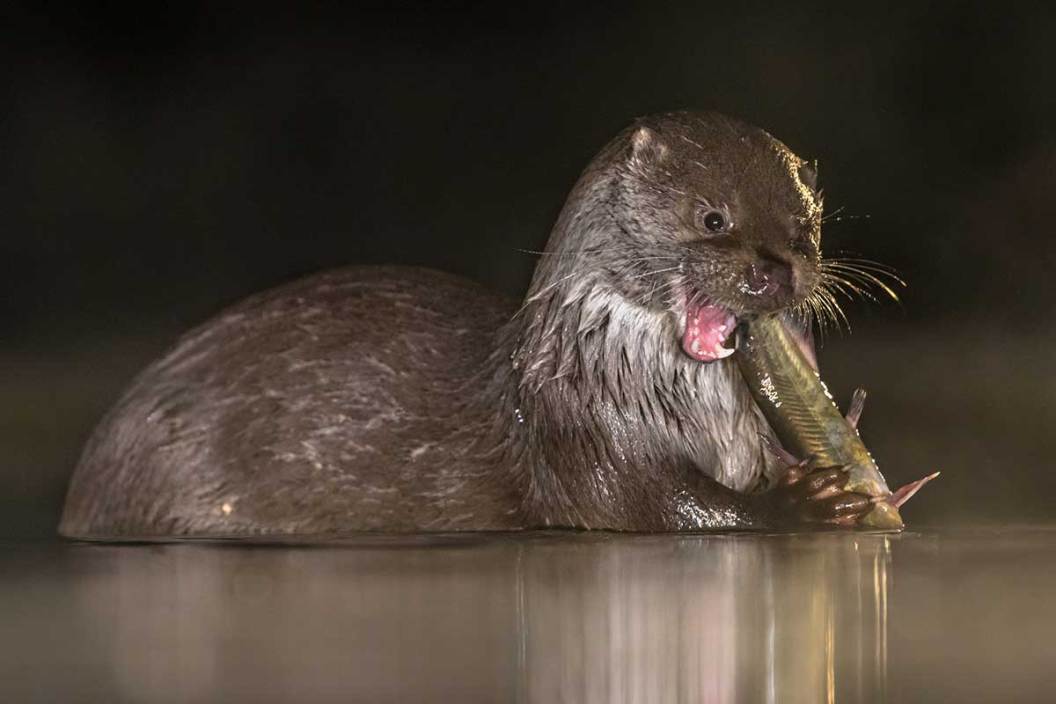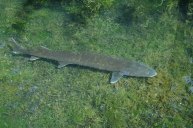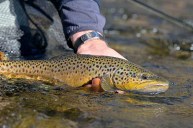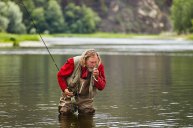Ever since the first humans realized that there was food swimming in the water, we've searched for and found ways to spear them, trap them, or catch them. Human beings have spent entire lifetimes trying to outwit fish by angling for them in various ways. More often than not, they come to find that the fish have ways of making fools out of us. When it comes right down to it, are we better off for the methods of fishing that we've discovered? Sometimes it seems a little hard to tell, especially since we have seen what other wild creatures do to have success at catching fish. For our part, getting on all fours and trying to grab a fish with our mouths might seem laughable, but if cheeseburgers had legs, we would chase them just like wild animals do to grab lunch. All kidding aside, the wild animals of the world that catch and eat fish do it in such a grand way as to make us look a bit silly for trying to fool them with a fly or worm on a string. But with very little exception, it's all we have. With that in mind, let's take a look at how it's really done.
Sea Lion
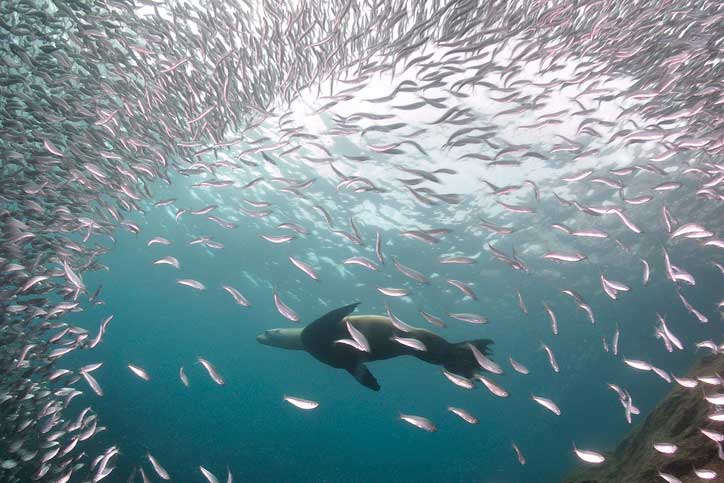
Eduardo Baena/Getty
These sea lions are nefarious for stealing the catch of human fishermen, but their ability to catch anything that swims is legendary. They eat a variety of prey, such as squid, anchovies, mackerel, rockfish, and sardines, but they can put a hurting on salmon stocks and can sometimes be seen right at fish passage areas near dams.
River Otter
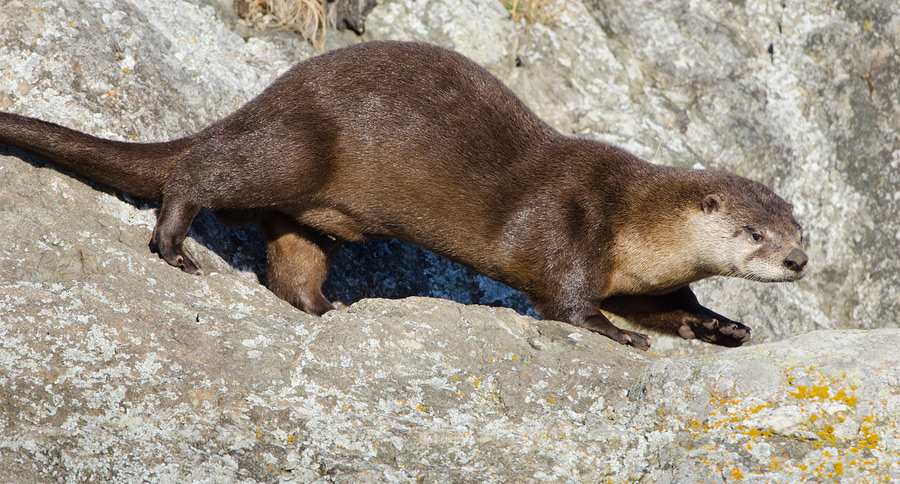
Otters were so good in their fish catching ability, it is said that Marco Polo observed Chinese fishermen during his travels using the animals to do the work for them. Even Izaak Walton lamented the fact that they could out fish us at every level. They are skillful, playful, and even fun to watch, but they can be aggressive to people who get too close to them.
Kingfisher
Kingfishers can see their prey swimming just under the water's surface at quite the distance and pounce on them before they know what hit it. Not only that, but as seen in the video, they have a brutal way of making sure that they don't swallow anything that's still alive. Anyone who has watched a kingfisher fish knows just how amazing their ability really is.
Merganser
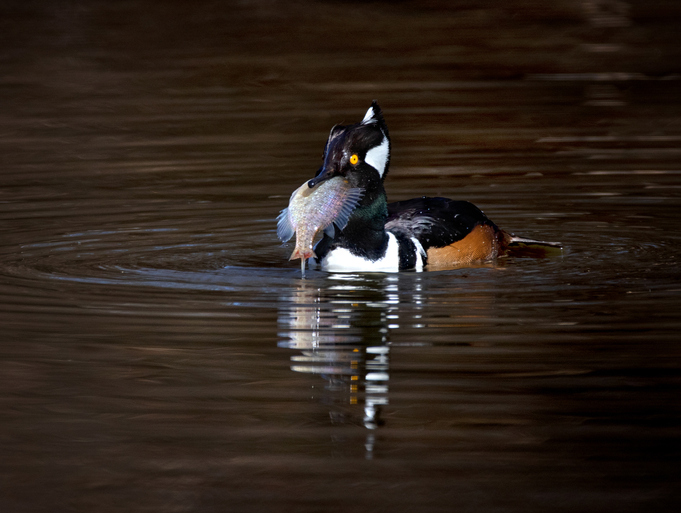
graphicphoto/Getty
While certainly not the only diving duck that catches and eats fish, the common merganser is amazing at it. In fact, they do so well that I've personally watched seagulls follow them around and harass them as they pop out of the water in an effort to steal their catch. They are common to see from the duck blind along the shores of the Great Lakes, but aren't very good table fare due to this diet.
Northern Water Snake
Northern water snakes are excellent at pursuing and catching fish. They are altogether stealthy, fast, and aggressive when it comes to any fish that has the unfortunate timing to get too close to one. They are often mistaken for the cottonmouth which only exists in the southern part of the U.S. Even though northern water snakes can be aggressive if they are cornered, they are not poisonous or dangerous to anyone.
Cormorant
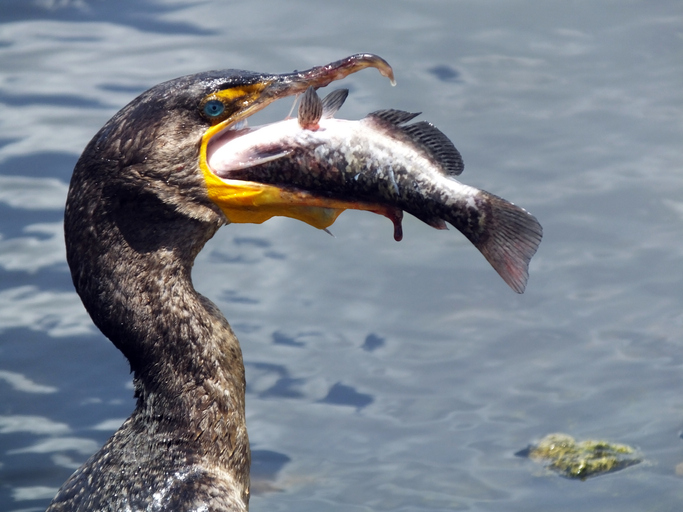
passion4nature/Getty
Here is another animal that is so good at its fishing skill, that humans have long since turned the tables and used it to gather their food for themselves. As many anglers along the Great Lakes will tell you, they are one of the worst things to happen to the fishery for the last 40 years and counting. Cormorants are one of the best fishing birds known.
Dragonfly Nymph
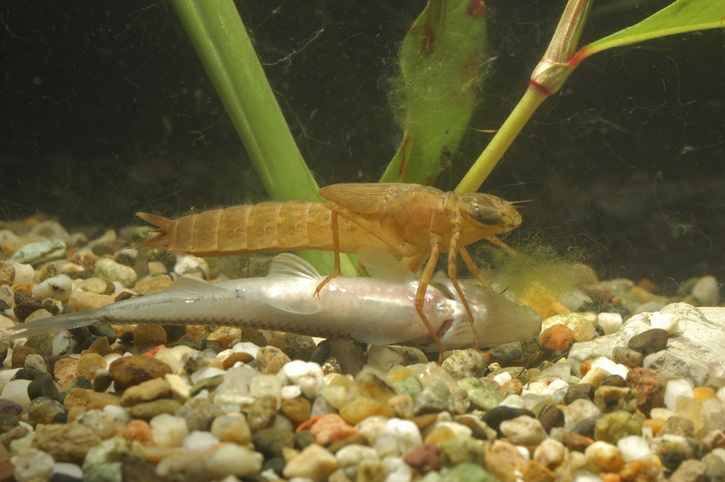
mauribo/Getty
Dragonfly larvae might be the most patient fisherman out, there since they are an ambush-type predatory insect. They will catch small crawfish and other insects, but their fish catching prowess is well documented. The best part is that all their feasting will eventually turn them into a voracious mosquito eating machine, the dragonfly.
Brown Bear
Maybe it's the fierce competition or it's just the nature of the bears, but even though these massive bears (capable of reaching upwards of 900 pounds) may miss a few shots, they still make the most of what the spawning run gives them to fatten up for the winter. And just as a quick review: every grizzly bear is a brown bear, but not all brown bears are grizzly bears.
Osprey
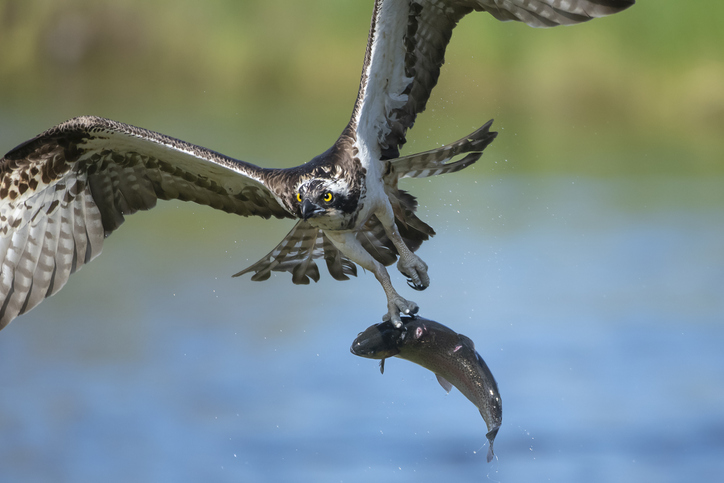
nikpal/Getty
Ospreys sometimes dive on fish from as high as 100 feet above the water, locking their talons before them and folding their wings to enter the water as fast as they can. They have gripping pads on their feet and curved claws to help carry the fish away after capturing it. They often have to fight for their catch against marauding bald eagles who have their own fish catching ability, but who also are well known for stealing from the osprey.
Mink
These amazing little furbearers have an uncanny knack that allows them to pursue fish right in the same waters where they live, and come out winning. I watched this mink emerge from the water with an invasive round goby in its mouth, but could only watch as it busted me trying to get past with its meal.
Eventually, it came back and retrieved the reward of its efforts and munched away on the non-native fish. Minks are well known for their swimming ability and keen eyesight, especially under the water. Minks have elongated bodies, bushy tails, and short legs, but they certainly do a job on fish.
Please check out my book "The Hunter's Way" from HarperCollins. Be sure to follow my webpage, or on Facebook and YouTube.
